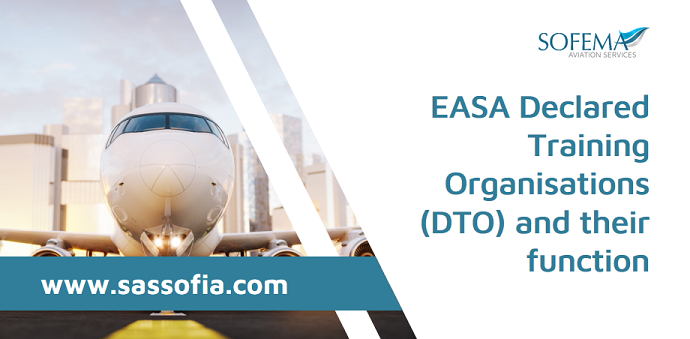Sofema Aviation Services (SAS) www.sassofia.com reviews the key elements of the Declared Training Organisations Process.
Introduction – Declared Training Organisations (DTO)
To accommodate the various “mainstream requirements” in relation to the implementation of Flight Crew licencing and the fact that ALL types of pilot licences and ratings had to be provided in Approved Training Organisations (ATO) resulted in something of an imbalance related to general aviation training.
To address the potential disparity EASA developed a new & proportionate system for general aviation. The is known as a ‘Declared Training Organisation’ (DTO).
What training can be provided by a Declared Training Organisation?
- Light aircraft pilot’s licence (LAPL),
- Private pilot’s licence (PPL),
- Sailplane Pilots,
- Balloon Pilots,
- Associated ratings can also be provided in a DTO.
For aeroplanes DTO Capability can include:
- Single-engine piston ratings and
- Additional ratings
o Night,
o Aerobatics,
o Mountain,
o Sailplane,
o Banner towing).
For helicopter DTO Capability can include:
- Type-ratings for single-engine aircraft (including turbines) with five or less seats.
- Night ratings.
Declared Without Approval
- Does not need approval from the Competent Authority in the way that an Approved Training Organisation (ATO) does.
- A representative of the organisation submits a declaration.
o The declaration confirms that the organisation has implemented a safety policy and will comply with all applicable requirements,
o Lists the training courses the organisation will provide,
o Identifies the aircraft aerodromes and operating sites to be used,
o Identifies the names of management personnel.
DTO – Simplified Requirements
- Nominate two management posts. (Identify Representative)
- The DTO needs to have adequate facilities and aircraft.
- The representative is responsible to develop and implement a safety policy.
o Ensure that the DTO complies with applicable requirements.
o Sufficient resources available.
- Head of Training is responsible for:
o Content of courses.
o Delivery of training.
Note: The same person could be nominated as both Representative and Head of Training.
DTO Training Programmes
- Training programmes for all of the courses that the DTO will offer.
- Ref Part-FCL for guidance as to content.
- May provide standardisation courses for flight examiners. (Require Special Approval by Competent Authority (CA) )
Note: DTOs are not required to have an operations manual (optional)
DTO Records and Reporting
- Records of all training delivered.
- Progress of individual students.
- Qualifications of instructors.
- Course completion certificates will be issued for the students to use when they apply for their licences or ratings.
Note: In place of compliance monitoring a DTO will conduct an annual internal review and produce a report.
- The review will cover safety performance and the adequacy of training.
- The report will also include details of the training courses delivered during the year.
DTO Authority oversight
- Competent Authorities are under an obligation to conduct oversight of DTOs.
o Risk-based oversight.
o Concentrate on:
– Larger organisations,
– Providing more training or
– Where an Authority has reason to think that there could be safety risks,
– Authorities will conduct inspections and carry out audit of DTOs,
o Some without prior notice.
o Any safety issues will require corrective action.
o DTO May be suspended ( in extreme cases)
Next Steps
Follow this link to our Library to find & Download technical documents for Free.
Sofema Aviation Services & Sofema Online provide EASA Compliant Regulatory and Vocational training please see the websites or email team@sassofia.com
Tags:
aviation, EASA Compliant training, EASA requirements, EASA regulations, Approved Training Organisation (ATO), DTO, Declared Training Organisation, General Aviation, SAS blogs





